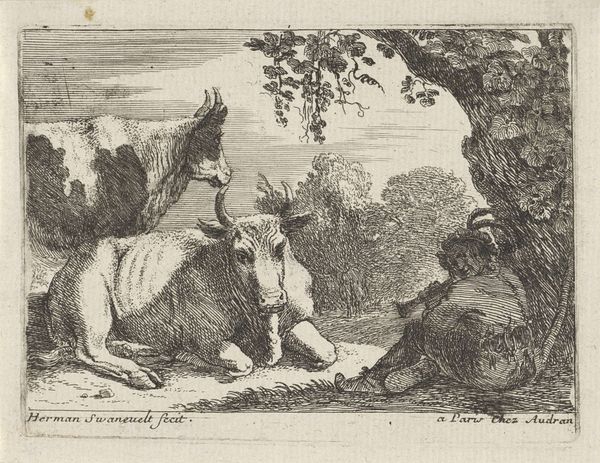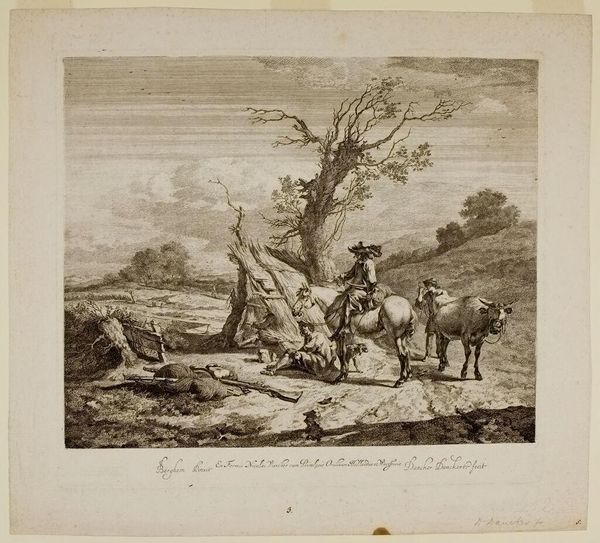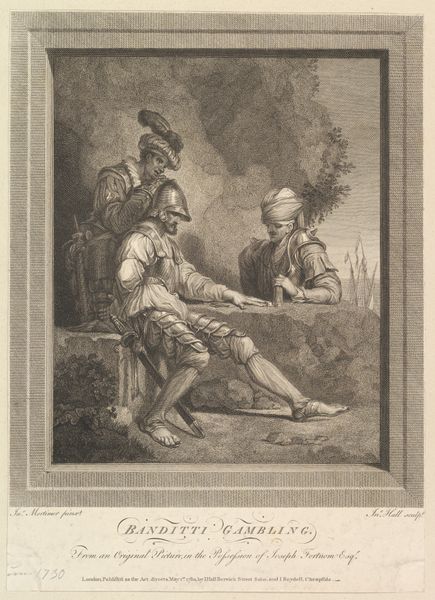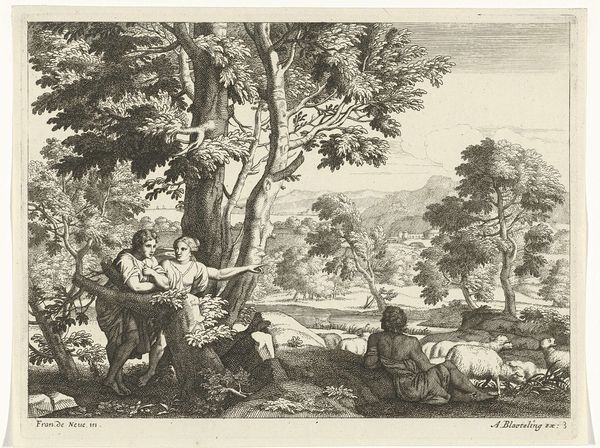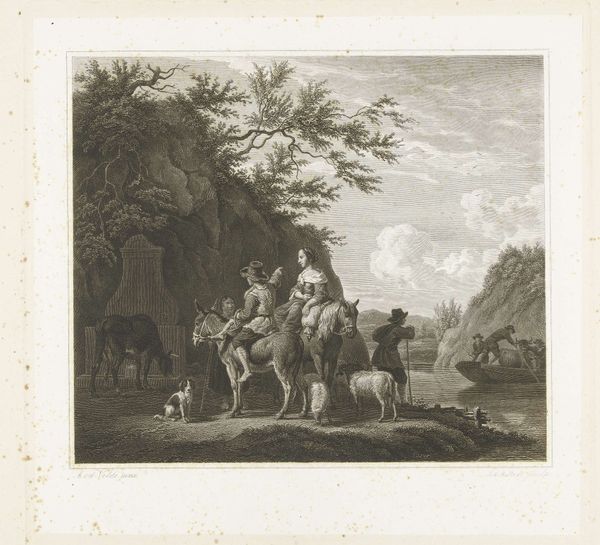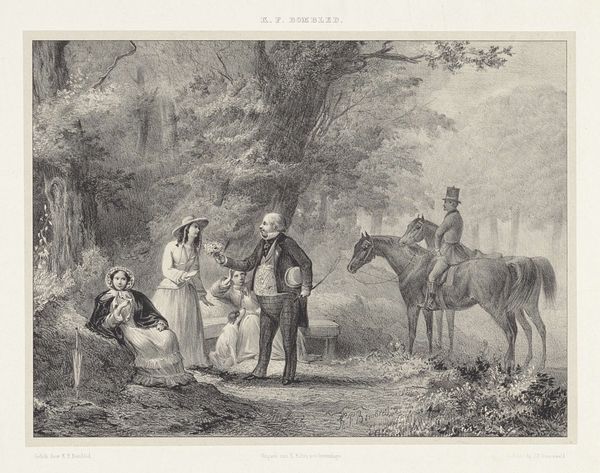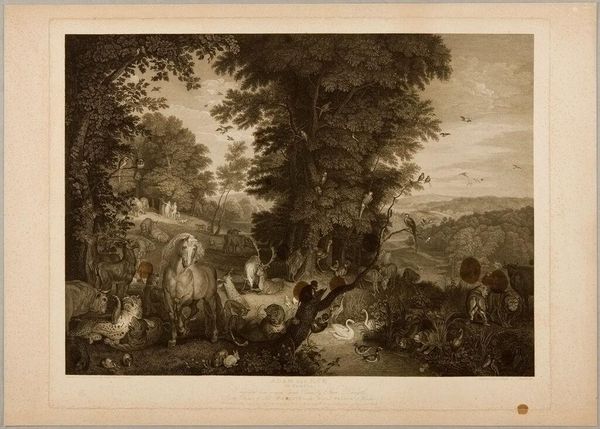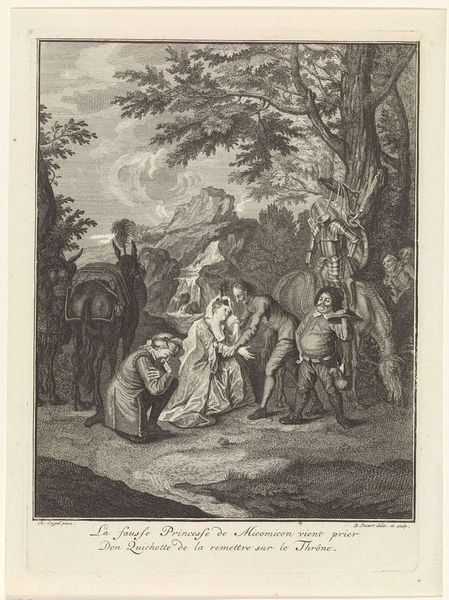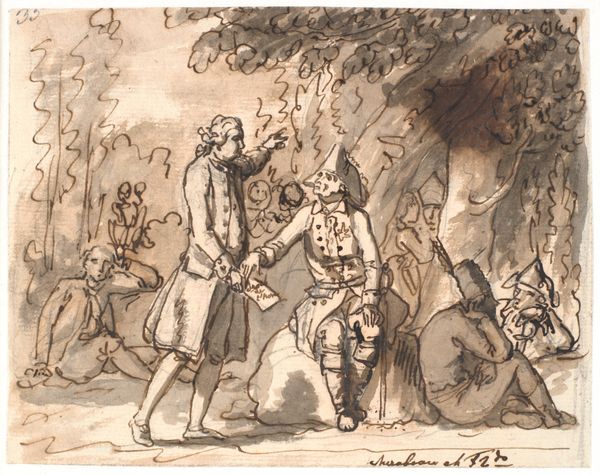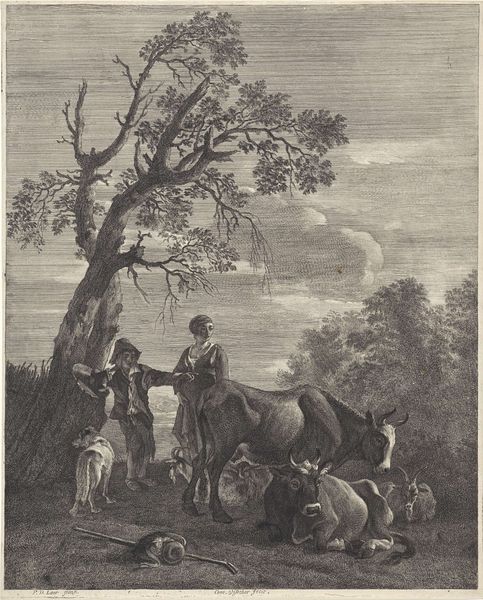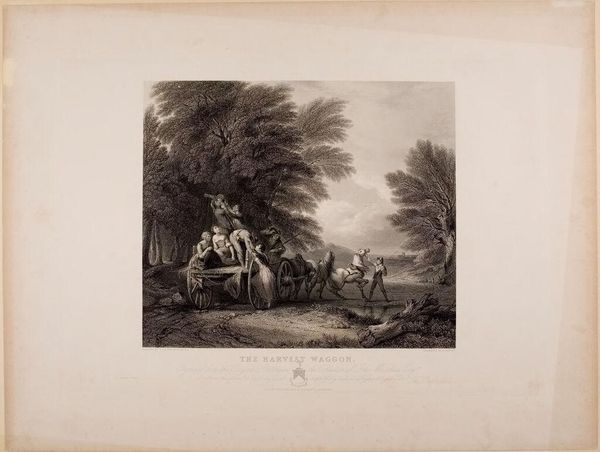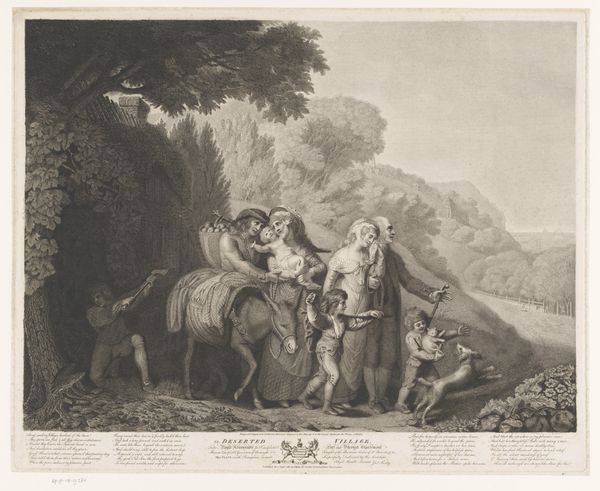
painting, oil-paint
#
painting
#
oil-paint
#
landscape
#
human
#
history-painting
#
realism
Copyright: Public domain
Curator: Thomas Sully's oil on canvas, "The Capture of Major André," created in 1812, presents a pivotal moment during the American Revolution. What's your initial take? Editor: It's a somber scene, really. A feeling of quiet dread permeates the landscape, despite its outward tranquility. There’s a real stillness that amplifies the tension of the figures' interaction. Curator: Absolutely. Sully employs a very interesting compositional structure. The use of chiaroscuro to highlight André juxtaposed with his captors, forming a triangle that directs the eye. There’s a tension in that geometry that I think conveys the unstable dynamic. Editor: Indeed, and one wonders about the racial dynamics implicit in the scenario: Sully portrays André with an almost luminous complexion and elegant demeanor in stark contrast to the rougher presentation of his captors, three men presented in disarray. Is Sully commenting on class and allegiances within the revolution itself? Curator: Possibly, but let's also consider Sully's technical mastery. Observe the detail in André’s clothing, the texture rendered meticulously compared to the loose brushwork elsewhere, focusing our attention on him, visually at least. Editor: Agreed, and yet this begs the question, “whose story is being told”? How is this visual focus functioning as a construction of sympathy? History painting is never objective. Who gets framed as the victim is the political work here, right? And what narratives are bolstered as a result? Curator: Of course. And thinking more conceptually, the dark, overgrown path could represent the ambiguity and moral compromises inherent in warfare. Nothing is clean-cut, everything is veiled. Editor: A brilliant point. But consider this too, such events impacted ordinary lives—the very lives often overlooked in historical accounts, people and voices lost because those who were not in positions of power didn't have chroniclers at the ready to record their truths. We’re fortunate that the visual arts push us to look deeper into complex pasts. Curator: "The Capture of Major André" demonstrates how seemingly straightforward historical portrayals can reveal intricate interplay between representation and perception, form and content. Editor: It reminds us that revisiting these depictions allows for nuanced and often crucial reflections on the construction of history and the stories we continue to tell ourselves.
Comments
No comments
Be the first to comment and join the conversation on the ultimate creative platform.
